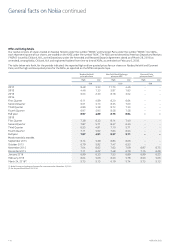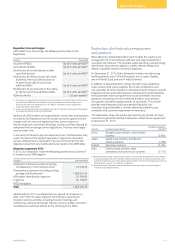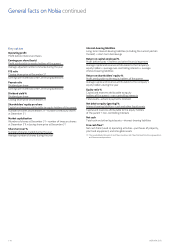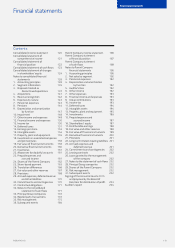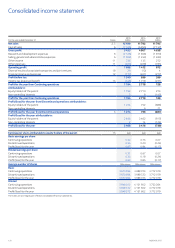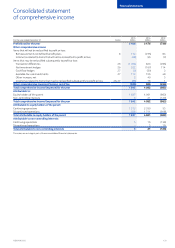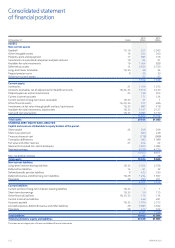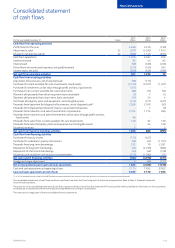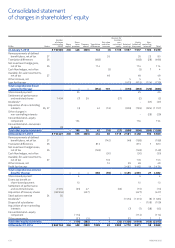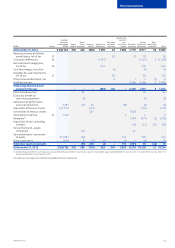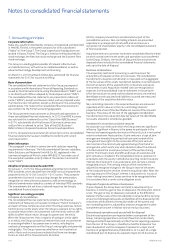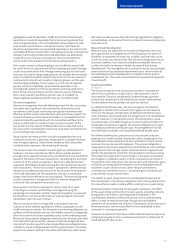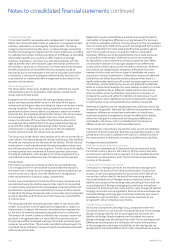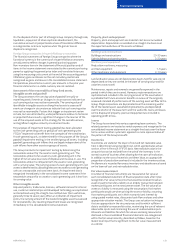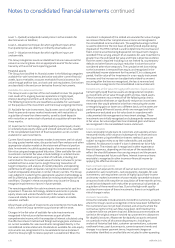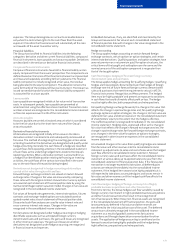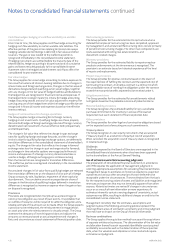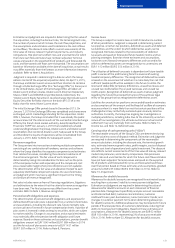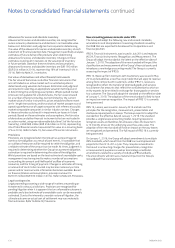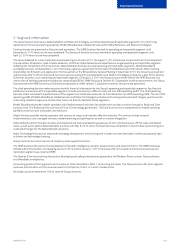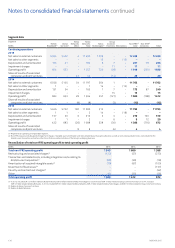Nokia 2015 Annual Report Download - page 128
Download and view the complete annual report
Please find page 128 of the 2015 Nokia annual report below. You can navigate through the pages in the report by either clicking on the pages listed below, or by using the keyword search tool below to find specific information within the annual report.126 NOKIA IN 2015
1. Accounting principles
Corporate information
Nokia Oyj, a public limited liability company incorporated and domiciled
in Helsinki, Finland, is the parent company for all its subsidiaries
(“Nokia” or “the Group”). The Group’s operational headquarters are
located in Espoo, Finland. The Group is listed on the Nasdaq Helsinki
stock exchange, the New York stock exchange and the Euronext Paris
stock exchange.
The Group is a leading global provider of network infrastructure
andrelated services, with a focus on mobile broadband, as well as
advanced technology development and licensing.
On March 31, 2016 the Board of Directors authorized the nancial
statements for 2015 for issuance and ling.
Basis of presentation
The consolidated nancial statements of the Group are prepared
inaccordance with International Financial Reporting Standards as
issued by the International Accounting Standards Board (“IASB”) and
inconformity with IFRS as adopted by the European Union (“IFRS”).
The consolidated nancial statements are presented in millions of
euros (“EURm”), except as otherwise noted, and are prepared under
the historical cost convention, except as disclosed in the accounting
policies below. The notes to the consolidated nancial statements
alsoconform to the Finnish accounting legislation.
The Group presents two businesses as Discontinued operations in
these consolidated nancial statements. In 2015, the HERE business
was sold and this is referred to as the “Sale of the HERE Business”.
In2014, substantially all of the Devices & Services business was
soldand this is referred to as the “Sale of the D&S Business”.
RefertoNote3, Disposals treated as Discontinued operations.
In 2015, comparative presentation of certain items in the consolidated
nancial statements has been modied to conform with current
yearpresentation.
Other information
This paragraph is included in connection with statutory reporting
requirements in Germany. The fully consolidated German subsidiary,
Nokia Solutions and Networks GmbH & Co. KG, registered in the
commercial register of Munich under HRA 88537, has made use of
theexemption available under § 264b of the German Commercial
Code (“HGB”).
Adoption of pronouncements under IFRS
On January 1, 2015, the Group adopted amendments to multiple
IFRSstandards, which resulted from the IASB’s annual improvement
projects for the 2010-2012 and 2011-2013 cycles. They comprise
amendments that result in accounting changes for presentation,
recognition or measurement purposes as well as terminology or
editorial amendments related to a variety of individual IFRS standards.
The amendments did not have a material impact on the Group’s
consolidated nancial statements.
Signicant accounting principles
Principles of consolidation
The consolidated nancial statements comprise the nancial
statements of Nokia Oyj as the parent company (“Parent Company”),
and each of those companies over which the Group exercises control.
Control over an entity exists when the Group is exposed, or has rights,
to variable returns from its involvement with the entity and has the
ability to aect those returns through its power over the entity.
Whenthe Group has less than a majority of voting or similar rights
inanentity, the Group considers all relevant facts and circumstances
inassessing whether it has power over an entity, including the
contractual arrangements and the Group’s voting rights and potential
voting rights. The Group reassesses whether or not it controls an
entity if facts and circumstances indicate that there are changes
toone or more of the three elements of control.
All inter-company transactions are eliminated as part of the
consolidation process. Non-controlling interests are presented
separately as a component of net prot and are shown as a
component of shareholders’ equity in the consolidated statement
ofnancial position.
Acquired entities or businesses have been consolidated from the date
on which control over the net assets and operations was transferred
tothe Group. Similarly, the results of Group entities or businesses
disposed of are included in the consolidated nancial statements
onlyup to the date of disposal.
Business combinations
The acquisition method of accounting is used to account for
acquisitions of separate entities or businesses. The consideration
transferred in a business combination is measured as the aggregate
ofthe fair values of the assets transferred, liabilities incurred towards
the former owners of the acquired entity or business and equity
instruments issued. Acquisition-related costs are recognized as
expenses in the consolidated income statement in the period in
whichthe costs are incurred and the related services are received.
Identiable assets acquired and liabilities assumed are measured
separately at the acquisition date fair values.
Non-controlling interests in the acquired business are measured
separately at fair value or at the non-controlling interests’
proportionate share of the identiable net assets of the acquired
business. The excess of the cost of the aggregate consideration
transferred over the acquisition date fair values of the identiable
netassets acquired is recorded as goodwill.
Investment in associates and joint ventures
An associate is an entity over which the Group exercises signicant
inuence. Signicant inuence is the power to participate in the
nancial and operating policy decisions of the entity, but is not control
or joint control over those policies. A joint venture is a type of joint
arrangement whereby the parties that have joint control of the
arrangement have rights to the net assets of the joint venture.
Jointcontrol is the contractually agreed sharing of control of an
arrangement, which exists only when decisions about the relevant
activities require the unanimous consent of the parties sharing
control. The Group’s share of prots and losses of associates and
jointventures is included in the consolidated income statement in
accordance with the equity method of accounting. Under the equity
method, the investment in an associate or joint venture is initially
recognized at cost. The carrying amount of the investment is
adjustedto recognize changes in the Group’s share of net assets
oftheassociate or joint venture since the acquisition date. After the
carrying amount of the Group’s interest is reduced to nil, in case of
aloss-making investment, losses continue to be recognized when
itisconsidered that a constructive obligation exists.
Disposal of separate entities or businesses
If upon disposal the Group loses control of a separate entity or
business, it records a gain or loss on disposal at the date when control
is lost. The gain or loss on disposal is calculated as the dierence
between the fair value of the consideration received and the carrying
amounts of derecognized assets and liabilities of the disposed entity
or business attributable to the equity holders of the parent and
non-controlling interest, adjusted by amounts recognized in other
comprehensive income in relation to that entity or business.
Discontinued operations and assets held for disposal
Discontinued operations are reported when a component of the
Group, comprising operations and cash ows that can be clearly
distinguished both operationally and for nancial reporting purposes
from the rest of the Group, is classied as held for disposal or has
been disposed of, and the component represents a major line of
business or geographical area of operations, or is a part of a single
coordinated plan to dispose of a separate major line of business or
Notes to consolidated nancial statements


